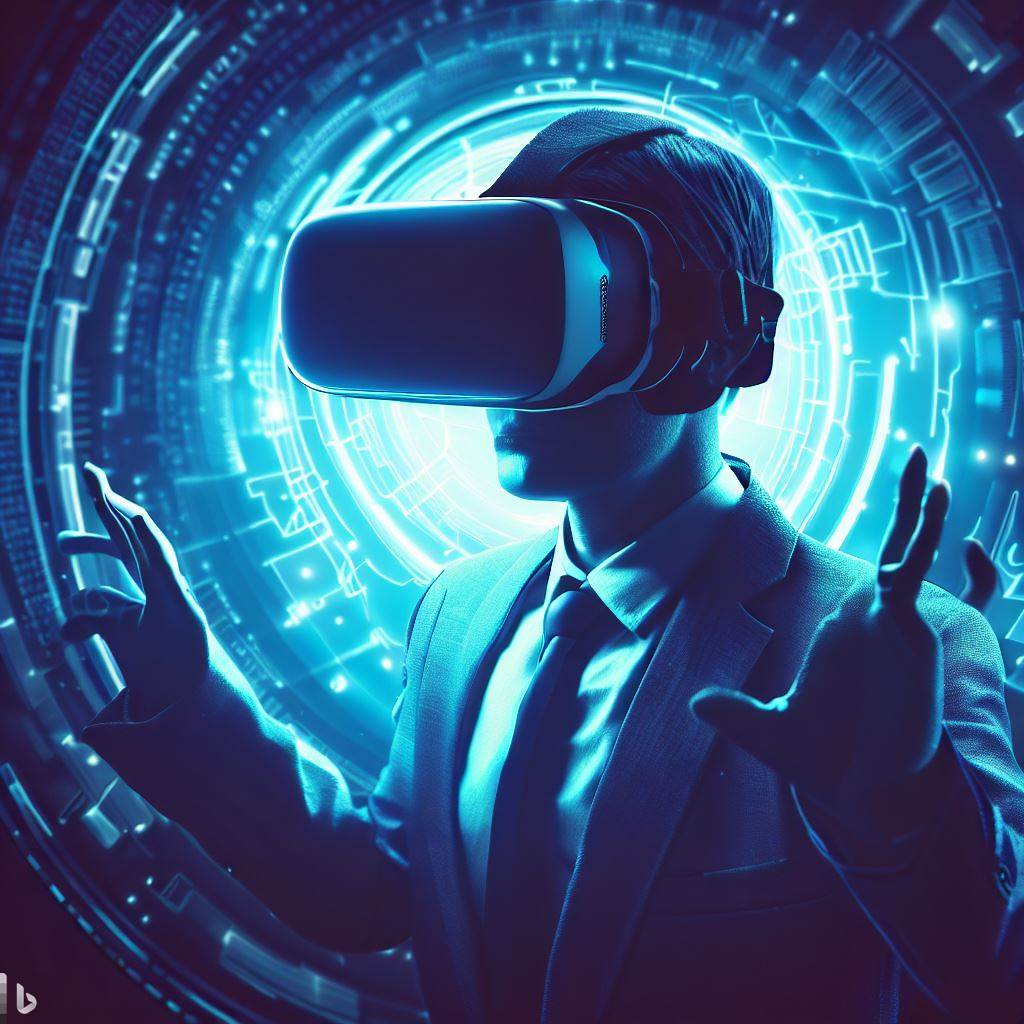The Rise of Virtual Reality: Bridging the Gap Between Imagination and Reality
Exploring the Boundless Frontiers of Virtual Reality

Introduction
In recent years, the world has witnessed an unprecedented technological revolution that has transformed the way we live, work, and entertain ourselves. One of the most groundbreaking advancements in this era is the rise of virtual reality (VR). With its immersive and interactive capabilities, VR has taken the world by storm, bridging the gap between imagination and reality. In this article, we will delve into the fascinating realm of virtual reality, exploring its applications across various industries and its potential impact on our lives.
The Essence of Virtual Reality
Virtual reality can be described as a computer-generated simulation of a three-dimensional environment, which can be interacted with in a seemingly real or physical way. By wearing a VR headset or using other devices, users are transported to a virtual world that engages their senses, providing a sense of presence and immersion like never before.
Applications in Entertainment and Gaming
Entertainment and gaming have been at the forefront of adopting virtual reality technology. VR gaming offers an unparalleled level of immersion, enabling players to step into virtual worlds and interact with their surroundings. With the advancement of motion tracking and haptic feedback systems, users can physically move, gesture, and manipulate objects within the virtual space, making the gaming experience truly transformative.
Moreover, VR has extended beyond gaming into other forms of entertainment. Virtual reality films and documentaries provide viewers with a unique perspective, allowing them to become active participants in the narrative. This emerging medium has the potential to revolutionize storytelling, creating new avenues for filmmakers and audiences alike.
Education and Training
Virtual reality has tremendous potential in the field of education and training. By creating realistic and interactive simulations, VR can enhance learning experiences in various disciplines. Medical students, for example, can practice complex surgical procedures in a risk-free virtual environment, improving their skills and confidence before operating on real patients. Similarly, astronauts can undergo training in simulated space environments, preparing them for the challenges of extraterrestrial exploration.
Architecture and Design
In the realm of architecture and design, virtual reality has revolutionized the way professionals conceptualize and present their ideas. Architects can now create virtual walkthroughs of buildings, allowing clients to experience the design in a realistic manner before construction even begins. Interior designers can visualize and manipulate virtual spaces, experimenting with different layouts, materials, and lighting conditions. This technology enables stakeholders to make informed decisions and ensures that the final product meets their expectations.
Therapy and Rehabilitation
Virtual reality is increasingly being used in therapeutic and rehabilitation settings. Its immersive nature provides a distraction from pain and discomfort, making it an effective tool for pain management during medical procedures. In the field of psychology, VR is utilized to treat phobias and anxiety disorders through exposure therapy, allowing patients to confront their fears in a controlled and safe environment. Additionally, VR-based rehabilitation programs help individuals recover from physical injuries or neurological conditions by engaging them in interactive exercises and simulations.
The Future Possibilities
As virtual reality technology continues to evolve, its potential applications seem boundless. Industries such as tourism, automotive, sports, and retail are already exploring ways to leverage VR to enhance customer experiences and streamline operations. Virtual social platforms are being developed, allowing people from different parts of the world to interact and collaborate in a shared virtual space. Furthermore, the integration of VR with other emerging technologies like artificial intelligence and haptic feedback promises to create even more immersive and realistic experiences.
Conclusion
Virtual reality has ushered in a new era of immersive experiences, bridging the gap between imagination and reality. Its applications in entertainment, education, architecture, therapy, and various other industries have the potential to revolutionize the way we work, learn, and interact. As the technology continues to advance, we can expect virtual reality to become an integral part of our daily lives, enriching our experiences and opening up new possibilities. The future of virtual reality is undoubtedly promising, and we are only beginning to scratch the surface of its potential.
About the Creator
Shyam Sathish
I am Creative writer who possess the magic in weaving words and making a new world out of it.
Enjoyed the story? Support the Creator.
Subscribe for free to receive all their stories in your feed. You could also pledge your support or give them a one-off tip, letting them know you appreciate their work.






Comments
There are no comments for this story
Be the first to respond and start the conversation.